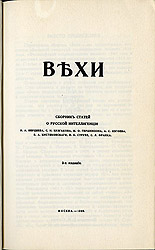As you already know, as Russia entered the twentieth century, there were fundamental socio-economic changes taking place within the empire. Some Russian statesmen such as Count Sergei Witte, minister of finance and later Prime Minister, Prince Dmitrii Sviatopolk-Mirskii, minister of the interior, Aleksandr Bulygin, minister of the interior, and Petr Stolypin, prime minister, all made proposals to accomplish some substantial political and economic reform to modernize the empire.
Notes on Projects for Russian Reform at the Start of the Twentieth Century
Lenin also formulated his vision of a future, Marxist Russia. In the fall of 1901 Lenin set to work writing down his blueprint, which ended up being published as What Is To Be Done? (Что де́лать? Наболевшие вопросы нашего движения,1902) The title was an exact copy of Nikolai Chernyshevskii's (1828-1889) novel of the same name, What Is To Be Done? (Что делать?, 1864) which had inspired the Russian populists of the 1860s.
Lenin foresaw a tightly-organized, Marxist, vanguard of professional revolutionaries who would be able to lead the Russian workers (and maybe the peasants too) to overthrow the tsar and then begin to implement a future Marxist state.
